
1910 Kelowna Regatta. Shared by the 'Old Kelowna' Facebook group.
Image Credit: Old Kelowna Facebook group.
October 15, 2023 - 6:00 PM
By the turn of the twentieth century, Kelowna was just a small town that was home to 700 people or less. By the late 1990s the region had blossomed into a bustling city, major fruit producer, wine region and popular tourist destination and one of the fastest growing population centres in Canada.
This is the story of how the city got here.
Kelowna was founded in 1892 and became a city just a short time after in 1905. In the early 1900s, most of the settler population was English, Bob Hayes, president at the Okanagan Historical Society, told iNFOnews.ca. The region saw a big influx of settlers during this period from Manitoba and Ontario.
“I think what happened is… they would settle here and then they would contact their relatives back in Manitoba or Ontario and say, ‘oh, it's April here, flowers are coming up,'” Hayes said. “In Manitoba, Winnipeg, it's snowing, it's 35 below zero. So, it was word of mouth that got people coming out here.”
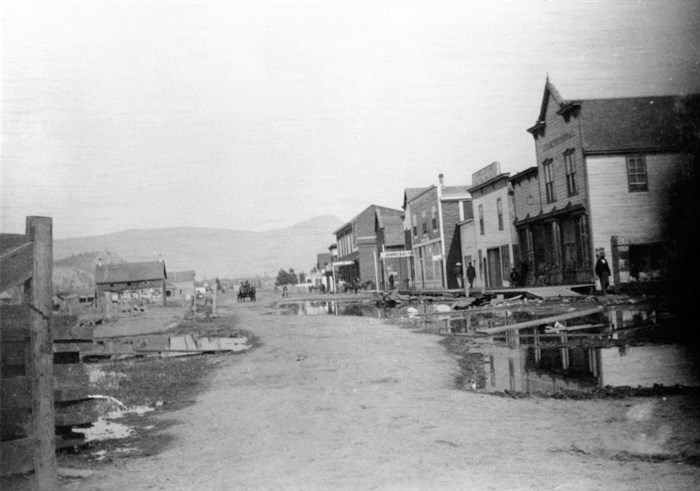
Bernard Avenue in the 1900s. Shared by Steven James on the 'Old Kelowna' Facebook group.
Image Credit: Steven James
After 1914, however, a major chunk of the young male population of Kelowna was lost to the First World War.
“Along the West Side Road, from Bear Creek up to Fintry, there were a whole bunch of young Englishmen. They'd settled there in the early 1900s to 1910s,” Hayes said. “En masse, they signed up to go off to war. So we had a huge loss of young male workers.”
As a result of this, women became vital members of the local workforce, Hayes said.
“This was a boom time for females in that the fruit packing houses all along Ellis Street, up towards the north end of town, they needed workers. The men were in the trenches,” Hayes said. “So, this is actually a time when women, they were doing things like packing, rolling cigars up in the BNA, which was the north end of the British North America tobacco. It was, you know, a good opportunity for women to say, 'well, OK, we can do it.'”
Around this time the population of the city was close to 1,500 people. With at least 135 men lost to the war, the population was significantly slashed. This included a number of First Nations men who also lost their lives during the war effort.
“They were not treated well,” Hayes said. “I think in some cases, they actually got home and had lost some of the rights that they had when they signed up.”
The decade following the war saw a huge influx of non-British immigrants.
“Areas like Rutland became very popular with people from Eastern Europe, Central Europe,” Hayes said. “They came here for the work in the packing houses or work in the orchards. We were getting more people of, say, Japanese and Italian descent. So, I think the first war… sort of changed things.”
This immigration began a new era of growth for north Kelowna, Hayes said.
“I think it was quite an exciting time,” Hayes said. “Definitely Kelowna was booming. I mean, the population was really expanding.”
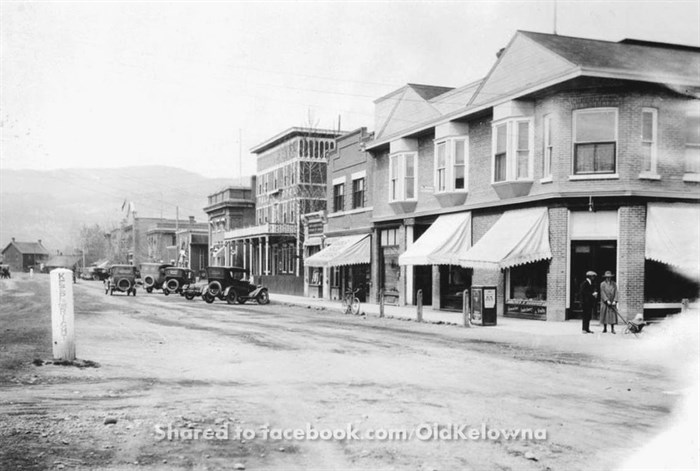
A picture of Bernard Avenue from the 1920s shared by the 'Old Kelowna' Facebook group.
Image Credit: Old Kelowna Facebook group.
Then, the Great Depression hit and took a particularly hard toll on local farmers in the 1930s.
“I remember my mom saying that my grandfather, Ernest Clement, back in the 30s, would take wagons full of onions — they grew onions out in Ellison — and just haul them out to the highway,” Hayes said. “And that's where they would just dump them…To bring them to market would actually cost more than they would get for them.”
With the outbreak of the Second World War came another significant loss of young men from the community, but also an influx of other settlers.
“One of the other things we benefited from, in a way, is we did get some Japanese settlement here,” Hayes said.
While many Japanese-Canadians were sent to internment camps, not all were, Hayes said.
“Some actually ended up here in Kelowna, but not as work camps,” Hayes said. “And, of course, they were quite welcome here, not by everybody, but because they provided labour. During the war, people like Jim Spall, who had an orchard here in town, he'd lost his labourers to the war effort. So, he welcomed a Japanese Canadian family onto his property, and they stayed and worked. And so, that, again, helped diversify the population.”
From then on, the population and growth of the city boomed.
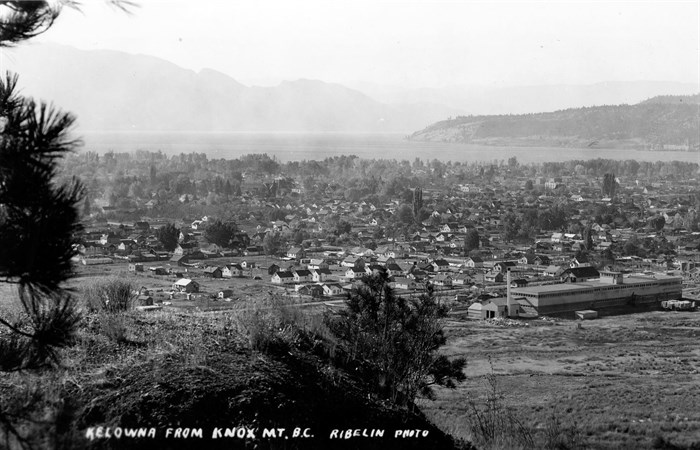
A view of Kelowna from Knox mountain from a picture taken in the 1940s. Shared by 'Old Kelowna' Facebook group.
Image Credit: Old Kelowna Facebook group.
“The 50s were a boom time,” Hayes said. “After the war in 1948, they opened the whole Princeton Highway. (This was) huge because that meant you could actually get to the Okanagan much easier from the coast.”
“And then in 1958, they opened the bridge. The first bridge. And that was a huge event. I mean, up till then, to get across the Okanagan Lake, you had to take a ferry.”
The bridge opening was attended by Princess Margaret who cut the ribbon signalling a new era for Kelowna.
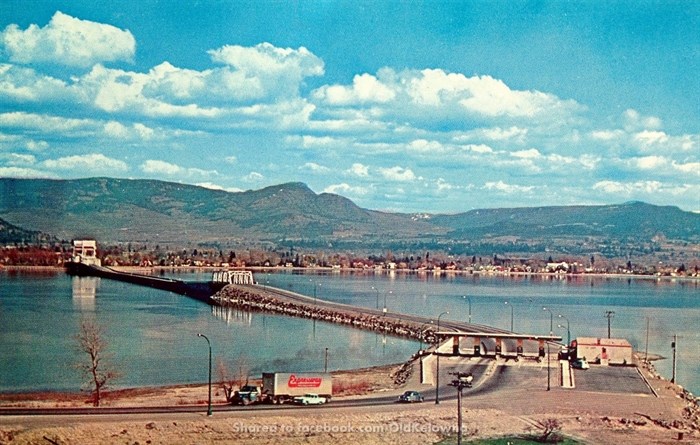
Image of the Kelowna bridge from a 1960s postcard. Shared by the 'Old Kelowna' Facebook group.
Image Credit: Old Kelowna Facebook group.
“I don't think you can possibly underestimate the impact it had on Kelowna,” Hayes said.
With the new easy access of the highway and the bridge alongside Kelowna’s convenient location in between Vancouver and Calgary, the city suddenly became a tourist hotspot.
By the 1960s, people were starting to realize the potential of the city, Hayes said.
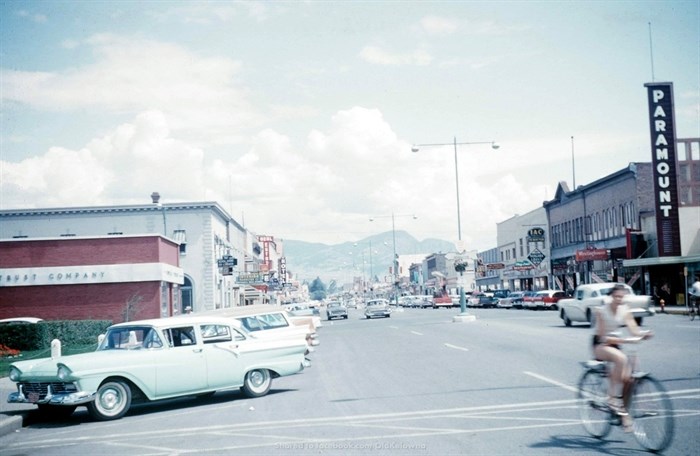
Downtown Kelowna in the late 1950s t0 1960s. Shared on the Old Kelowna Facebook page.
Image Credit: Old Kelowna Facebook Group.
The Okanagan College offered new academic opportunities and West Mill Carpets and Western Star Trucks offered well-paid year-round job opportunities.
“These were good jobs. They weren't seasonal. They weren't piecework. They were salary, well-paying jobs,” Hayes said. “And people moved in. In the 60s, the population, particularly of Rutland, was exploding. And at that point, Rutland didn't have any local government. It wasn't part of Kelowna. And so there was urban sprawl.”
In 1973, Rutland became part of the City of Kelowna, growing the population even more in the next decade.
“Families could come here and settle,” Hayes said. “You had a huge growth of the school population. In the 70s, the number of new schools were being built all over the place. Late 60s and 70s out in Rutland, in Glenmore, North Glenmore, because the population was growing so quickly. And these were people who wanted to stay here and raise their children.”
The 1970s saw a vast shift in the landscape from agricultural land to urban settlements and buildings. The development of Kelowna airport was also crucial during this time.
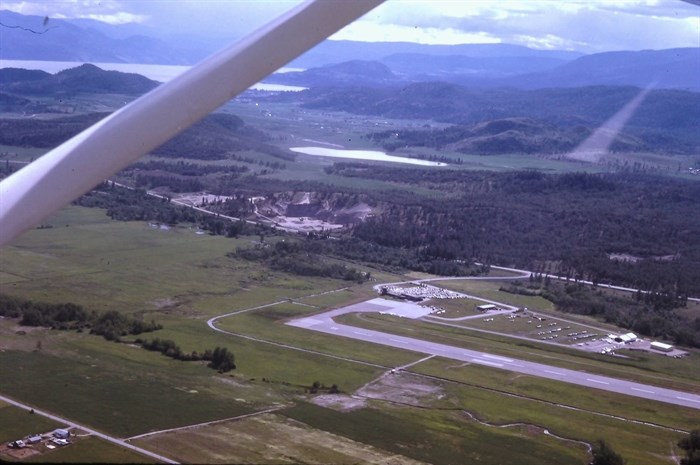
Kelowna airport in the 1970s.
Image Credit: Old Kelowna Facebook group.
“That's a huge thing because, when you get the development of things like Big White in the 60s, people want to come here to ski, well, they can fly in from Montreal if they want,” Hayes said. “So you have the growth, you have tourism, but it's changing. It's a higher, upper scale tourism. You have the wineries and the golf courses from the 70s and 80s and 90s, and the ski hills. So we've lost the campgrounds that people used to come and have their two weeks camping out at Lakeshore or at a campground.”
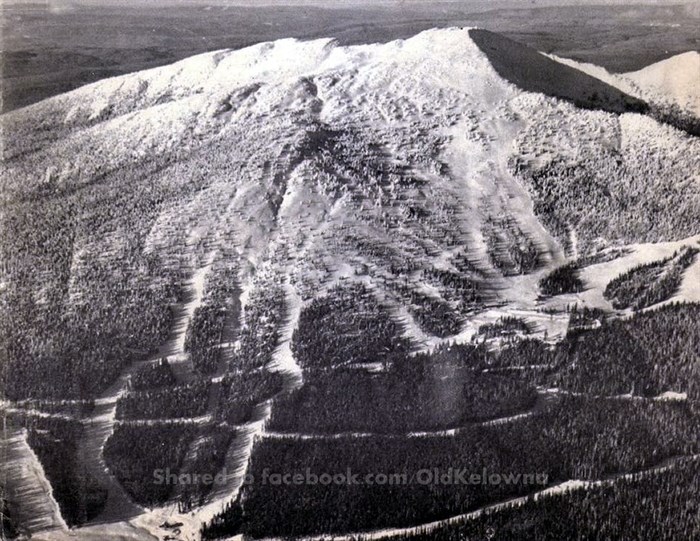
Big White ski mountain in 1971. Shared by the 'Old Kelowna' Facebook group.
Image Credit: Old Kelowna Facebook group.
The end of the century brought even more development, alongside a sudden growth in international tourists.
“I think the biggest event of the 90s… (was the) opening of the Coquihalla and the connector,” Hayes said.
With the journey from Kelowna to Vancouver now drastically shortened, the city became even more accessible and therefore enticing to tourists and visitors.
By the end of the century, Kelowna had transformed from a small English settlement into a growing cosmopolitan city and international tourist destination.
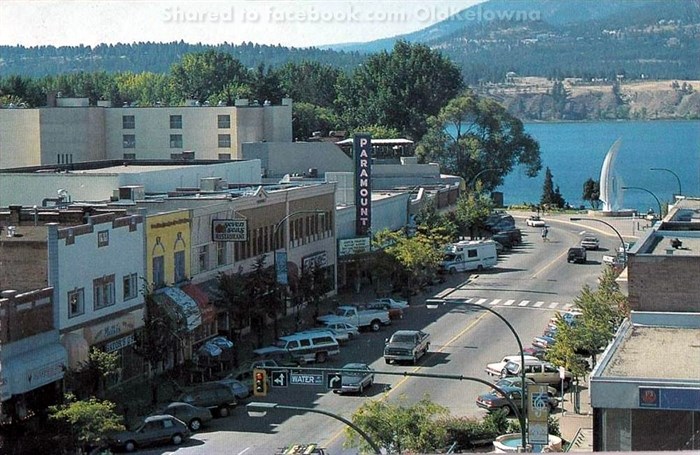
Downtown Kelowna in the early 1990s. Shared by the 'Old Kelowna' Facebook group.
Image Credit: Old Kelowna Facebook group.
To contact a reporter for this story, email Georgina Whitehouse or call 250-864-7494 or email the editor. You can also submit photos, videos or news tips to the newsroom and be entered to win a monthly prize draw.
We welcome your comments and opinions on our stories but play nice. We won't censor or delete comments unless they contain off-topic statements or links, unnecessary vulgarity, false facts, spam or obviously fake profiles. If you have any concerns about what you see in comments, email the editor in the link above. SUBSCRIBE to our awesome newsletter here.
News from © iNFOnews, 2023